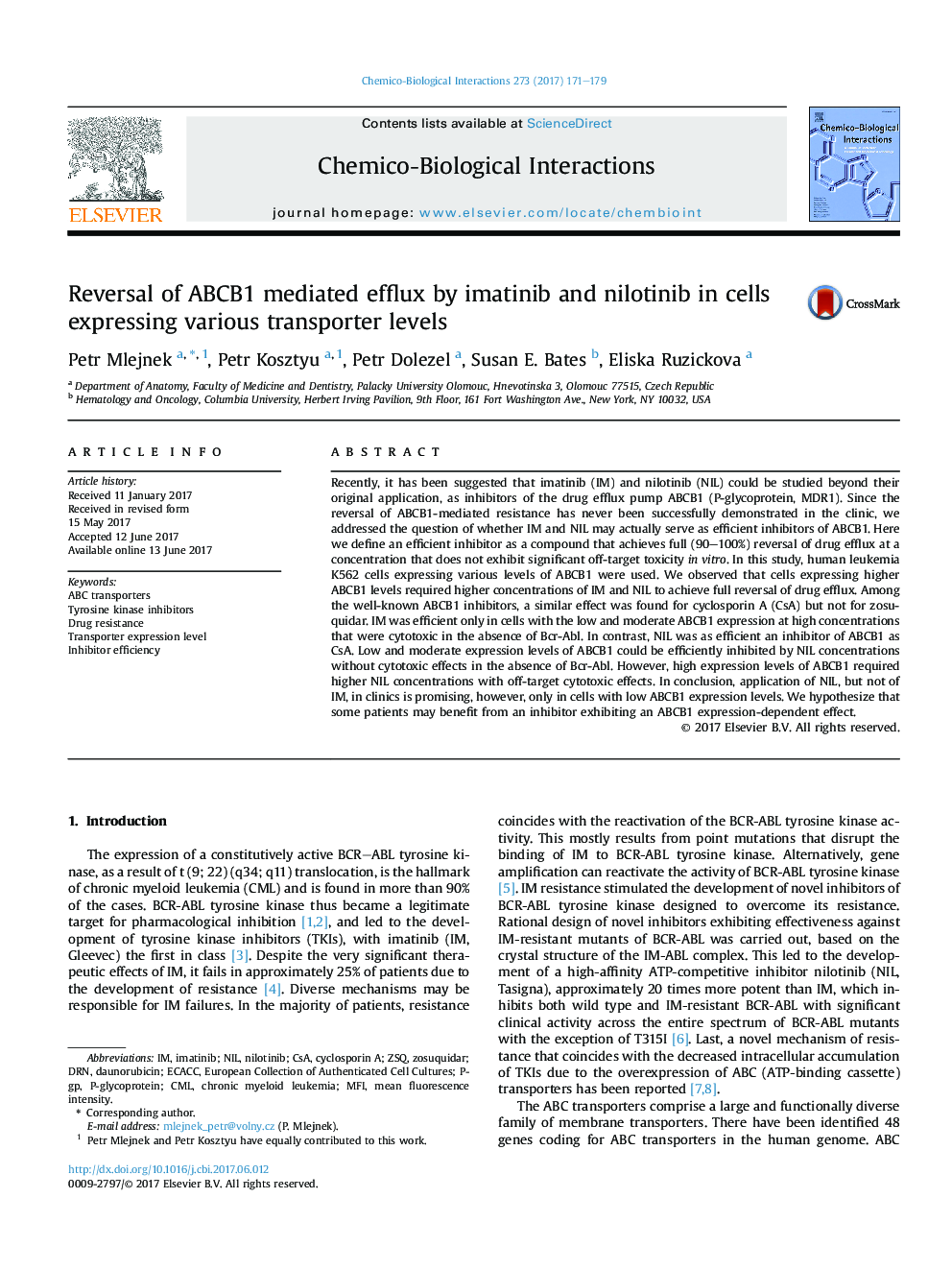| Article ID | Journal | Published Year | Pages | File Type |
|---|---|---|---|---|
| 5559309 | Chemico-Biological Interactions | 2017 | 9 Pages |
â¢Inhibition efficiency of IM and NIL depends on the ABCB1 expression level.â¢Cells expressing lower ABCB1 levels require lower concentrations of inhibitors.â¢NIL, but not IM, inhibits ABCB1 expressed at low to moderate levels.â¢Expression levels of ABCB1 in tumors are usually low.â¢NIL should be evaluated for its potential to inhibit ABCB1 in the clinic.
Recently, it has been suggested that imatinib (IM) and nilotinib (NIL) could be studied beyond their original application, as inhibitors of the drug efflux pump ABCB1 (P-glycoprotein, MDR1). Since the reversal of ABCB1-mediated resistance has never been successfully demonstrated in the clinic, we addressed the question of whether IM and NIL may actually serve as efficient inhibitors of ABCB1. Here we define an efficient inhibitor as a compound that achieves full (90-100%) reversal of drug efflux at a concentration that does not exhibit significant off-target toxicity in vitro. In this study, human leukemia K562 cells expressing various levels of ABCB1 were used. We observed that cells expressing higher ABCB1 levels required higher concentrations of IM and NIL to achieve full reversal of drug efflux. Among the well-known ABCB1 inhibitors, a similar effect was found for cyclosporin A (CsA) but not for zosuquidar. IM was efficient only in cells with the low and moderate ABCB1 expression at high concentrations that were cytotoxic in the absence of Bcr-Abl. In contrast, NIL was as efficient an inhibitor of ABCB1 as CsA. Low and moderate expression levels of ABCB1 could be efficiently inhibited by NIL concentrations without cytotoxic effects in the absence of Bcr-Abl. However, high expression levels of ABCB1 required higher NIL concentrations with off-target cytotoxic effects. In conclusion, application of NIL, but not of IM, in clinics is promising, however, only in cells with low ABCB1 expression levels. We hypothesize that some patients may benefit from an inhibitor exhibiting an ABCB1 expression-dependent effect.
Graphical abstractDownload high-res image (333KB)Download full-size image
